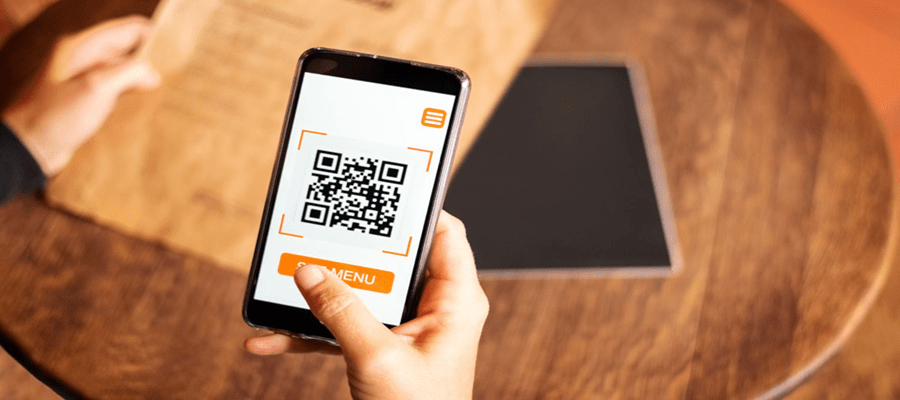
Boost Restaurant Efficiency with a Kitchen Display System
Is your restaurant struggling with slow service, kitchen confusion, or order mistakes? These problems can frustrate your customers and hurt your business. But there’s a simple solution: a Kitchen Display System (KDS) integrated with your Point of Sale (POS) software.
A KDS helps your kitchen and waitstaff communicate better, manage orders faster, and deliver a smoother dining experience. In this blog, you’ll learn how a KDS can transform your restaurant, plus tips for easy setup and maximum results.
What Is a Kitchen Display System?
A Kitchen Display System is a digital screen in your kitchen that shows all customer orders in real-time. It replaces old paper tickets and handwritten notes, making everything clear and organised for your kitchen team.
Why Your Restaurant Needs a KDS
Key Benefits
-
Faster Order Processing: Orders go straight from the POS to the kitchen screen instantly.
-
Fewer Mistakes: Digital orders are easy to read, reducing errors from messy handwriting.
-
Better Communication: Waitstaff and chefs stay updated on every order without shouting or running back and forth.
-
Happier Customers: Quick, accurate service means more satisfied guests.
How a KDS Improves Restaurant Operations
1. Streamlined Order Management
-
Orders appear on the kitchen screen as soon as they’re entered.
-
Special requests and food allergies are displayed.
-
No more lost or mixed-up paper tickets.
2. Real-Time Communication
-
Changes to orders update instantly on the kitchen display.
-
Chefs can mark orders as “preparing” or “ready,” so waitstaff know exactly when to serve.
-
Orders are sorted by priority, so urgent dishes are handled first.
3. Efficient Kitchen Workflow
-
Orders are organised by station (appetisers, mains, desserts).
-
High-priority items are highlighted for quick attention.
-
Cooks can see the best order to prepare dishes, reducing wait times.
KDS vs. Traditional Paper Tickets
|
Feature |
KDS (Kitchen Display System) |
Paper Tickets |
|
Order Speed |
Instant |
Slow (manual) |
|
Error Rate |
Very Low |
High |
|
Communication |
Real-time updates |
Delays possible |
|
Order Organization |
By station & priority |
Easily mixed up |
|
Environmental Impact |
Paperless |
High paper waste |
|
Special Instructions |
Visible |
Often missed |
Step-by-Step: How to Set Up a KDS
1. Assess Your Needs
-
Identify where communication breaks down in your restaurant.
-
Gather feedback from the kitchen and waitstaff.
2. Choose the Right System
-
Look for easy-to-use software that fits your restaurant size.
-
Make sure it integrates with your POS.
3. Install the Hardware
-
Set up screens in the kitchen where all chefs can see them.
-
Test connections and make sure everything works.
4. Train Your Team
-
Show staff how to use the system.
-
Practice with real orders before going live.
5. Go Live and Monitor
-
Start using the KDS during slower hours.
-
Collect feedback and make tweaks as needed.
Features to Look for in a KDS
Essential Features
-
User-Friendly Interface: Simple screens that are easy to read.
-
Customizable Layout: Organize orders by kitchen station.
-
Real-Time Alerts: Sound or visual notifications for new orders.
-
Durability: Screens that can handle heat and spills.
-
Reporting Tools: Track how long orders take and spot bottlenecks.
Eco-Friendly and Cost-Effective
Switching to a KDS means no more paper tickets, which saves money and helps the environment. You’ll also spend less on printers and ink.
Tips for Maximizing Your KDS
-
Keep the system updated for the latest features.
-
Encourage staff to give feedback for improvements.
-
Check order times and adjust kitchen workflow as needed.
-
Use reporting to spot trends and fix issues quickly.
Enhanced Customer Experience
What Customers Will Notice
-
Faster Service: Orders reach the kitchen instantly, so food comes out quicker.
-
Accurate Orders: No more mixed-up meals or missing special requests.
-
Better Staff Focus: Waitstaff can spend more time with guests, not running to the kitchen.
A Kitchen Display System can make a big difference in your restaurant’s success. It speeds up service, cuts down on mistakes, and helps your team work together better. With a KDS, you’ll see happier customers, smoother operations, and a boost in your bottom line.

